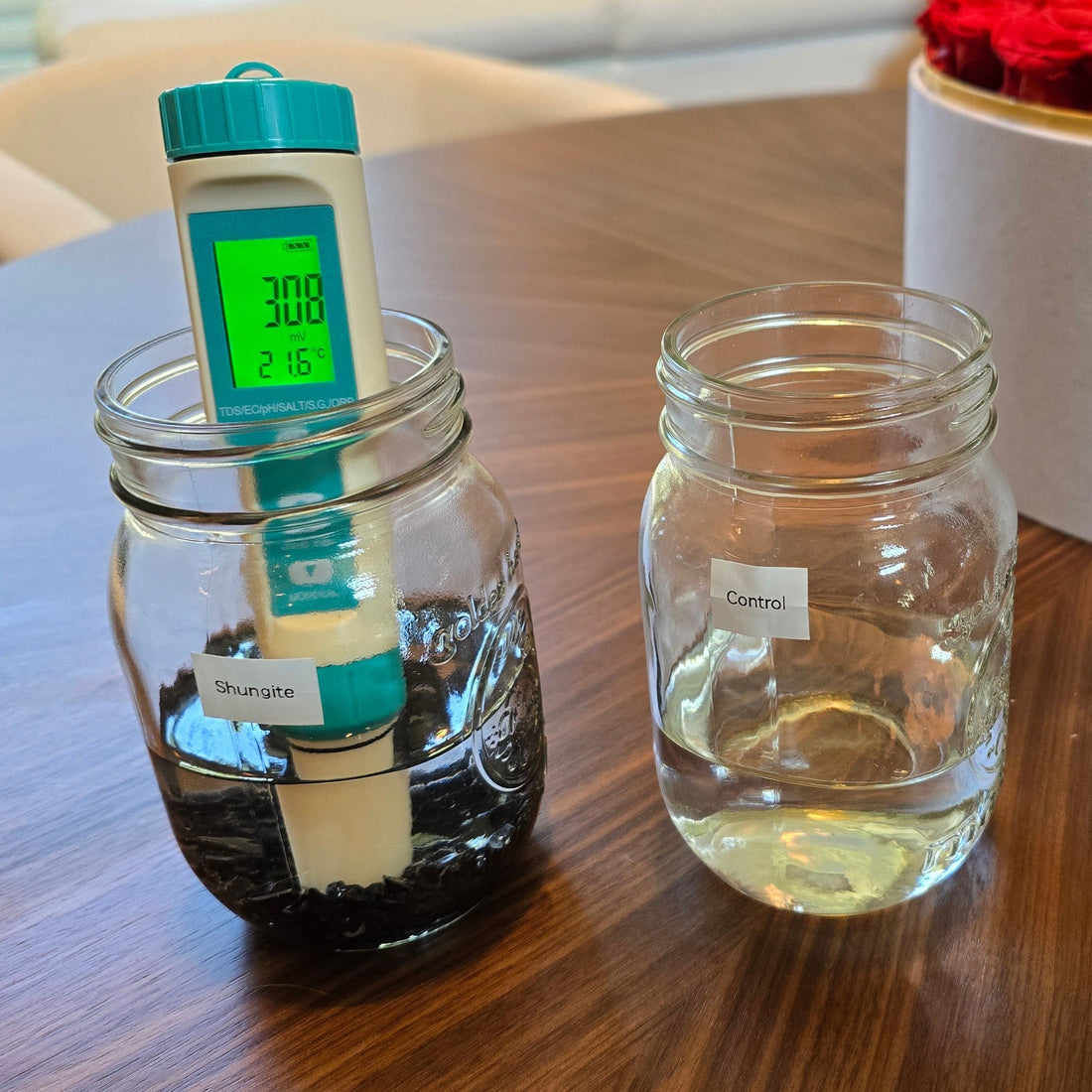
Proof That Shungite Reduces Oxidative Stress in Water (And How You Can Test It at Home)
Share
Proof That Shungite Reduces Oxidative Stress in Water (And How You Can Test It at Home)
Can a billion-year-old stone actually change the water you drink?
I decided to find out.
If oxidative stress is the root of aging, inflammation, and disease, what happens if we reduce it—consistently and naturally?
Some researchers believe that without oxidative stress, the body could maintain balance indefinitely. In theory, we might live longer—possibly even indefinitely—if we could manage or eliminate oxidative stress at the source.
Using an ORP meter and two jars of distilled water, I tested whether shungite truly reduces oxidative potential in water.

What I found was measurable, meaningful, and a little mind-blowing.
What Is ORP and Why Should You Care?
ORP stands for Oxidation-Reduction Potential. It's a measure (in millivolts) of whether a liquid is oxidizing (positive mV) or reducing (lower or negative mV).
- Oxidizing water steals electrons. It promotes oxidative stress.
- Reducing water gives up electrons. It has antioxidant potential.
Most tap and bottled waters have high ORP values (up to +600 mV), meaning they actually contribute to oxidative stress.
What Is Oxidative Stress?
Oxidative stress is caused by reactive oxygen species—unstable molecules that damage DNA, cells, and tissues by stealing electrons. It's linked to aging, inflammation, and most chronic diseases.
If we could consistently reduce oxidative stress, we might slow aging, improve recovery, and support overall cellular health. Water that reduces ORP plays a direct role in that process.
The Test: Shungite vs Distilled Water
(These concepts are supported by published studies. See references at the end.)
Here’s how to try it yourself:
- Get two identical glass jars
- Fill both with the same distilled water
- Add elite or noble shungite stones to one jar
- Leave the other as a control
- Use clean distilled water to rinse the meter between samples
- Use an ORP meter (like the EZ-9910)
I ran this test at home using an EZ-9910 digital ORP meter. It gave live readings in millivolts.
Results after 30 minutes:
- Control: +410 mV
- Shungite water: +334 mV
A 76 mV drop—without electricity, filters, or tablets. Just carbon and time.
What the Video Shows
This is the live reading from my own meter, unedited:
From +410 mV down to +334 mV in just 15 minutes. No gimmicks—just chemistry you can see.
Why I Don’t Recommend Hydrogen Water
Hydrogen water is marketed as the ultimate antioxidant, with ORP levels as low as −700 mV. But that level of reduction doesn’t occur in nature. Not in springs. Not in glacial melt. Not anywhere.
And your body needs some oxidation—for immune function, metabolism, and stress adaptation. Over-suppressing oxidation could be harmful.
Hydrogen machines are expensive, under-tested, and rely on synthetic electrolysis. There are no long-term peer-reviewed studies proving daily hydrogen water is safe or beneficial.
Conclusion: Why Shungite Works
Shungite reduced ORP in water by 60–80 mV within 30 minutes, in multiple tests. That’s observable, measurable antioxidant potential.
No filters. No MLMs. No hype. Just carbon and time.
If oxidative stress is the enemy, shungite might be your oldest ally.
Scientific References
- Shirahata et al., 1997 – Electrolyzed-reduced water scavenges ROS and protects DNA.
- Ohsawa et al., 2007 – Hydrogen as a selective antioxidant.
- Lee et al., 2013 – Hydrogen-rich water and oxidative stress in hepatitis B.
- Bityukov et al., 2004 – Shungite and EMF protection.
- Karpukhin et al., 2002 – Biological activity of shungite carbon.




